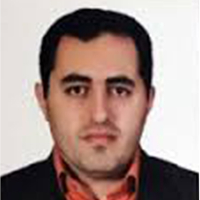Islamic Architects and Islamic Mathematicians Artistics Meeting, To Utilize Geometry in Architecture The period under study is the fourth to the eleventh AH
In specialized topics of aesthetics, structure and function, the buildings of Islamic architecture in Iran during certain periods, show the strong presence of intellectual sciences such as mathematics. The use of geometry as a part of the science of numerical mathematics, which in its intellectual position has complex calculations, indicates the connection of Islamic architects with the mathematicians of their time. According to the available books and written documents, the architect's personal reference to complex mathematical books in terms of numerical application is a subject that has been seen in lesser power. Accordingly, in this article, the educational relationship between architects and Islamic mathematicians has been examined. Geometry in its numerical position can not be transferred to the architectural structure, and this must be transferred to a specific geometric process in terms of action. How to connect the mathematics of Islamic theology and architecture about geometry, and of a special theoretical or practical type that can be used in the field of architecture is the basic question of research. How Islamic architects have understood theoretical and practical geometry from mathematicians and have applied it in architecture. In this regard, in the present study, the author has examined the research and analysis operations by identifying the fourth to eleventh AH due to the presence of prestigious Islamic mathematicians as well as glorious Islamic architecture from a geometrically known point of view. The study of analysis on manuscripts is very valid in scientific centers. These manuscripts have been analyzed by architecture in the form of face-to-face research and academic communication in the preparation of scanned images. The manuscripts belong to Islamic scholars including Buzjani, Farabi, Ibn Sina, Akhavan al-Safa, and Jamshid Kashani. In order to study geometry in the theories of Islamic mathematicians and to obtain basic information about geometry and mathematics, the deductive method has been used in research, and the contextualist approach has been used in the discussion of historical issues of architecture and knowledge topics of geometry. The research findings show the decision of Islamic mathematicians based on the issues of Islamic belief and thought to meet the practical needs in Islamic society and beyond. Islamic architects are also among the most important learners in the field of building architecture and related matters in terms of geometry. These topics are in the form of converting numerical mathematics into theoretical geometry in its quantitative and qualitative dimensions and practical geometry to achieve practical cases in providing applied geometry for educating architects. These teachings, due to their complexity and the fact that they belong to the mathematical field of equivalence, required face-to-face educational communication. This issue is called the meetings of artists between Islamic mathematicians and architects according to its own process. In order to understand the knowledge of geometry by architectural experts in the period from the fourth to the eleventh AH, a subject has been created by Islamic mathematicians of that time that may have existed in previous centuries. This is the subject of communication classes created by Islamic mathematicians. They tried to improve jobs in various fields. In the field of architects, this issue is called Artistics Meeting. Meetings in which Islamic mathematicians, with their vast knowledge and perception, have applied theoretical knowledge to the profession and minds of artists. The method of calculating geometry in the practice of drawing and the emergence of applied volumes, surfaces and shapes has been done operationally as much as the consciousness of artists and the amount of their needs. Mathematicians such as Kashani, Farabi and Buzjani are among the most active people of the fourth to eleventh AH who have formed these sessions. What the architects have drawn and illustrated after teaching the sessions is the geometry of the Islamic mathematician, along with approximation and estimation with his previous knowledge and experience. In the past, architects used to turn to mathematicians in meetings to create architectural structures because an Islamic mathematician believes in the correctness and acceptability of a geometric theorem and teaches it when he can, through positive positivist and semantic methods of theoretical geometry. Prove it rationally. Islamic architects and mathematicians have discussed in their meetings how architecture in the field of applied geometry and have reached a conclusion in the discussion when the obtained geometry is based on theoretical and practical geometry and a correct understanding of it. Due to the breadth of perceptual understanding and experience, Islamic architects have developed the geometry learned for use in architecture into the dimensions of their profession, which is the result of a previous master and many years of experience, and use it in construction with the advice of an Islamic mathematician. Have done. This can be creativity in creating an architectural effect during the teaching of applied geometry in Artistics Meeting sessions by Islamic architects who have created magnificent and huge buildings in the period from the fourth to the eleventh AH.
- حق عضویت دریافتی صرف حمایت از نشریات عضو و نگهداری، تکمیل و توسعه مگیران میشود.
- پرداخت حق اشتراک و دانلود مقالات اجازه بازنشر آن در سایر رسانههای چاپی و دیجیتال را به کاربر نمیدهد.


